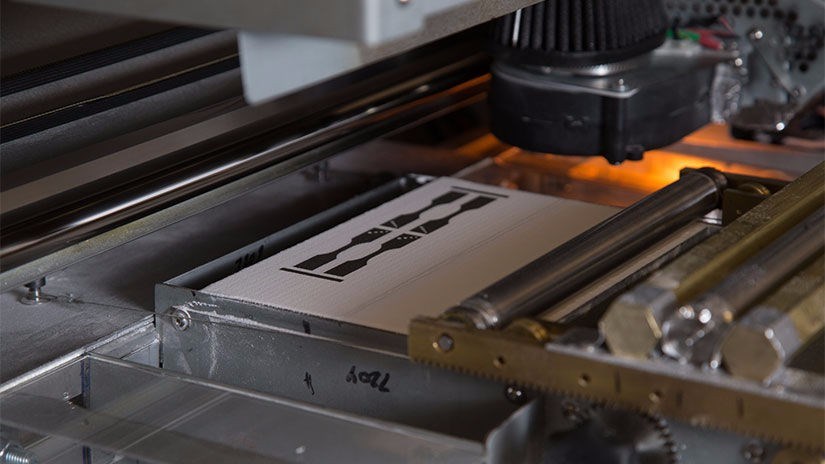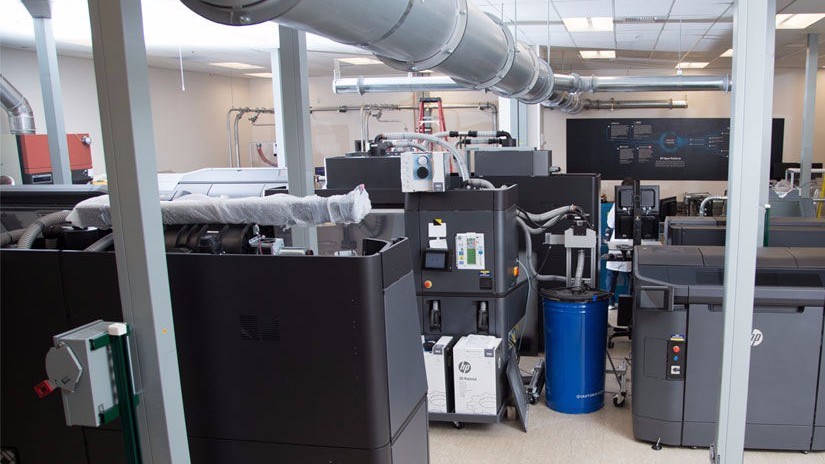HP Supports Material Development with Open Lab and Kit for Testing Spreadability
The company's materials head says independent efforts toward material development represent the fastest way for AM’s range of materials to expand.
Why are there tens of thousands of different material choices available for injection molding? Tim Weber, global head of 3D Materials and Advanced Applications for HP, says a significant part of the answer is that injection molding machine makers do not develop the materials that are used in their machines. The pace of material development would be slower and the scope of moldable materials we have today would be much smaller if they did. Materials companies develop materials instead, and he says HP believes additive manufacturing should follow the same model.
I recently had the chance to speak with Weber about the opening of the company’s new Open Materials and Applications Lab in Corvallis, Oregon, and just as significantly, the introduction of the company’s Materials Development Kit. The two developments are related, as both have to do with advancing the usefulness and acceptance of additive manufacturing by enabling materials companies independent of HP to develop materials for use on the company’s additive machines.
HP introduced its 3D printers last year. The company’s Multi Jet Fusion technology is a powder-bed system offering speed and repeatability in polymer 3D printing aimed at full scale additive production of plastic parts. As with every 3D printing system, the material is as significant a factor for success as the machine. The material must be engineered for this particular system’s approach to layering and solidification, which means the range of material choices for this system can advance only as fast as this material development takes place. Part of HP’s response is in-house material development, but another part is providing the path and resources for third-party materials companies to develop the materials they wish to market.
The Corvallis, Oregon, campus has a history of innovation for the company. Previous product lines have been invented and advanced here. It was a natural location for the open materials lab, Weber says, though the actual process of open materials development will begin at developer’s own home site.
“Think of Apple, which has a software development kit,” he says. “Apple provides a method allowing software developers to create new software that Apple can then certify for its platform. We are following a similar model. We’ve aimed to create a process, and the tools, for materials developers to create new materials on their own that we can then certify for our machines.”
Chief among those tools is what the company calls the MDK, or the Materials Development Kit. Success with a polymer in 3D printing calls for very different characteristics than success in an operation such as molding. Weber says one of the most basic characteristics is spreadability. The MDK allows a material developer to test the spreadability of a polymer still in development, and this unit is small enough to be shipped with ease.
Specifically, it is about the size of a breadbox. It comes with standard metal coupons onto which the material is spread, so the effectiveness of spreading can be evaluated and iteratively refined.
“Materials companies generally have no idea, at least at first, how to make powder work well in 3D printing,” he says. Spreadability is a first step—a characteristic typically not needed for other applications of powder material. Once this fundamental characteristic can be established, he says, the material is then promising enough for further development. The next stop is Corvallis.
The open materials lab is where the materials companies themselves can further evaluate and develop materials whose basic fitness for 3D printing has been demonstrated. Fusability, another important characteristic, is iteratively tested on a Jet Fusion test bed here. Consistency of the powder properties and—the ultimate point—the properties of the 3D-printed part itself are all measured and evaluated using various resources in the open lab. As its name implies, the aim is not for HP alone to do this work, but instead for engineers from the materials companies to work side by side with HP’s experts to more quickly develop the new materials important to those companies.
Evonik and BASF are among the materials companies that have partnered with HP and made use of these resources so far. The former introduced the first material developed by a third party and certified by HP, a PA-12 nylon that is FDA-compliant for food contact. Arkema, Henkel, Lehmann and Voss, and Sinopec Yanshan Petrochemical Co. are others that the company says support the open platform for materials development, and HP says it is engaged with more than 50 other companies in varying stages of materials development.
“We don’t have the bandwidth to do this work ourselves,” Weber says. If the company tried to keep material development in-house, the result would be a slow pace of growth for the range of AM materials available. And the result of that, he notes, would be an unnecessarily slow pace of growth for additive manufacturing.
Read Next
3D Printed Polymer EOAT Increases Safety of Cobots
Contract manufacturer Anubis 3D applies polymer 3D printing processes to manufacture cobot tooling that is lightweight, smooth and safer for human interaction.
Read MorePostprocessing Steps and Costs for Metal 3D Printing
When your metal part is done 3D printing, you just pull it out of the machine and start using it, right? Not exactly.
Read MoreBike Manufacturer Uses Additive Manufacturing to Create Lighter, More Complex, Customized Parts
Titanium bike frame manufacturer Hanglun Technology mixes precision casting with 3D printing to create bikes that offer increased speed and reduced turbulence during long-distance rides, offering a smoother, faster and more efficient cycling experience.
Read More




















